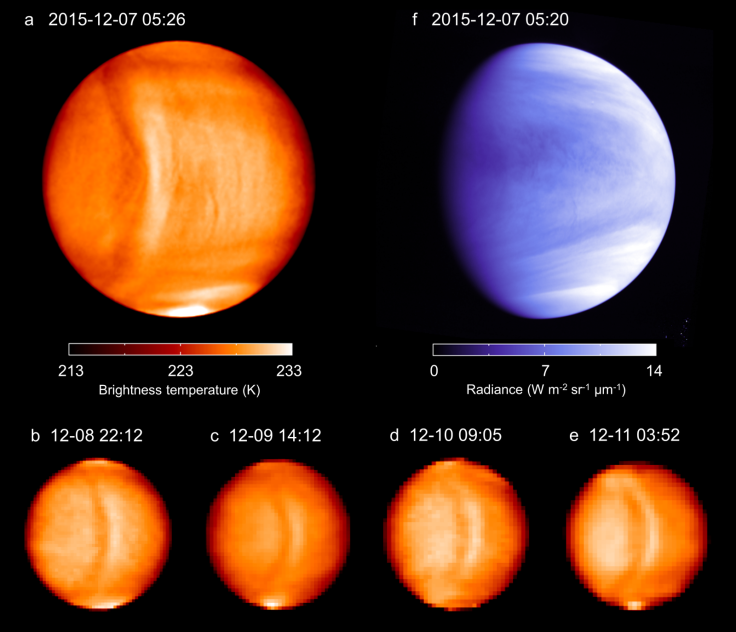Massive 10,000km-long structure spotted in Venus' atmosphere – before abruptly disappearing
The huge bright, hot structure was found in the upper atmosphere by the Jaxa Akatsuki spacecraft.

A massive, un-moving structure has been discovered in the upper atmosphere of Venus. Scientists detected the feature with the Jaxa's Akatsuki spacecraft and they believe it is some sort of gravity wave – although they do not understand how it ended up at the altitude of cloud tops.
The bow-shaped structure was first spotted in December 2015 and a team led by scientists from Rikkyo University in Japan were able to observe it over several days.
It measured 10,000km in length and was brighter and hotter than the surrounding atmosphere. When scientists attempted to observe it again a month later, it had disappeared. The team published their findings in the journal Nature Geoscience.
The Akatsuki spacecraft was launched in 2010. Having initially failed to enter the orbit of Venus, it spent five years going round the Sun before being pushed back on track in 2015.
It is currently undertaking a two-year mission to observe Venus, with cameras on board set up to study the atmosphere and cloud physics of our neighbouring planet.
While observing the Venus' upper atmosphere, at an altitude of around 65km, scientists noticed the huge, stationary structure. While the rest of the planet's atmosphere moves extremely fast – around 60 times faster than the speed of planet's rotation.

Moving at around 100 metres per second, thick clouds of sulphuric acid and smaller-scale atmospheric features normally travel along with this fast background wind. However, on 15 December, 2015, they noticed a highly unusual feature.
"The most surprising and interesting feature is a huge bow-shaped structure extending from the northern polar region, crossing the equator and reaching the southern polar region," they wrote. "The end-to-end length of the bow-shaped structure is longer than 10,000 km ... When LIR observed the same longitude and local time region at the earliest opportunity on 15 January 2016, the bow-shaped structure had disappeared."

Researchers said they think the structure is an atmospheric gravity wave that was generated in the lower atmosphere by a mountain range, then subsequently moved upwards into the upper atmosphere, where it was detected. A gravity wave develops as air flows over mountains on Earth because the air is thinner at higher altitudes.
However, the team said they do not know how the gravity wave formed or how it ended up in the upper atmosphere. "Numerical simulations provide preliminary support for this interpretation, but the formation and propagation of a mountain gravity wave remain difficult to reconcile with assumed near-surface conditions on Venus. We suggest that winds in the deep atmosphere may be spatially or temporally more variable than previously thought," they conclude.
© Copyright IBTimes 2024. All rights reserved.






